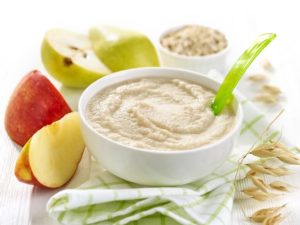The benefits of thawing breast milk are many. Sometimes new mothers simply need a little time out. They want to go to the gym, meet up with a friend or finally sleep in again.
But even if they want to return to work just a few months after giving birth, it is important that they can rely on their partner or other close relatives.
After all, the baby needs to be cared for and fed in the best possible way, so that he or she wants for nothing even if mommy is out of town and therefore unable to breastfeed her child. That’s why pumping or subsequently freezing breast milk is recommended, because it offers many advantages.
Table of contents
More Flexibility In Everyday Life: Freezing And Thawing Breast Milk
In the case of work commitments, it is sometimes necessary for the breastfeeding mommy to express breast milk. And upcoming private activities make it necessary to ask grandparents or other caregivers to look after the little darling.
For the sake of simplicity, you pump the breast milk in advance and then deposit it in a suitable place. Freezing breast milk is particularly convenient. If necessary, grandma and grandpa or another babysitter can bring the breast milk to the baby’s body temperature by warming it up.
Making Everyday Family Life Less Complicated – Thawing Breast Milk
Breastfeeding is one of the best things you can do for your child. Not only because the supply of nutrients is guaranteed in this natural way. But also because you can prevent stomach cramps and colic in your little treasure.
The ability to defrost breast milk and then bring it to the baby’s body temperature gives moms and dads more freedom in everyday life with their child. Nevertheless, fresh breast milk is always best for your baby.
But you will be amazed at how many situations there can be in which it is not possible to breastfeed your baby yourself when he or she is hungry. That’s why it’s ideal to be able to freeze your breast milk after pumping so that you can thaw it out and bring it to your baby’s body temperature when needed.
Defrosting Breast Milk And Storing Breast Milk – The Right Way To Do It
Simply pumping breast milk and then putting it in the freezer – that could pose health risks to your baby. In this article, you will learn how to defrost and then warm breast milk in a professional and healthy way, and why it is so important to proceed with caution right from the start.
Defrosting Breast Milk And Warming It Afterwards
Even after defrosting breast milk, a large part of the vitamins, trace elements, and enzymes remain intact. In this respect, storing breast milk is a very sensible, flexible, and far healthier way of feeding infants compared to conventional bottle feeding.
What is of fundamental importance with regard to storing breast milk or defrosting breast milk – careful hygiene. Because only then it is guaranteed that the breast milk after the storage is safe for your child.
What Is The Best Way To Store Breast Milk?
You have different options for storing breast milk. Which one you choose depends on different factors. Storing breast milk in the refrigerator is a good option, but freezing breast milk is also a best practice.
Fresh breast milk is characterized by excellent antibacterial properties. It is extremely rich in valuable antioxidants, precious vitamins, and high-quality fat. In this respect, it differs slightly from breast milk that has been stored in the refrigerator or chilled in the freezer.
You can store breast milk as follows:
- At room temperature of 16 to 25 degrees Celsius for a maximum of a few hours.
- In the refrigerator at a minimum of 4 degrees Celsius for a maximum of 24 hours.
- In the freezer or;
- In the freezer compartment of the refrigerator for about half a year at a minimum of – 18 degrees Celsius.
Good To Know
You should make sure that the breast milk is pumped out and stored hygienically. If this is not the case or if the milk comes into contact with bacteria during pumping, healthy feeding of the child is no longer possible.
A Distinction Is Made Between These Hygiene Variants
Normal Household Hygiene
The breastfeeding mother pumps the breast milk into the milk container, which has previously been rinsed with boiling water.
Very Clean Hygienic Conditions
The new mommy has sterilized her nipples before pumping. The suction device has also been carefully cleaned of bacteria and germs beforehand.
Hygienic Conditions
This type of breast milk treatment refers to full compliance with the guidelines with regard to cleaning and sterilization of the breast pump manufacturer’s specifications. These are not considered a legal requirement, but merely a guideline.
For infants who are under special medical supervision – for whatever reason – much more stringent guidelines usually apply with regard to expressing and storing breast milk.
Tips
If you would like to find out more about these guidelines, you can contact your attending physician and midwife directly. Today, it is becoming more and more common to seek the support of so-called lactation consultants.
These experts are also ideal contacts when it comes to hygiene when thawing or storing breast milk.
Make defrosting breast milk as easy as possible. To ensure this, however, it is important that you pay attention to the details when freezing the breast milk. For example, you should write the pumping date and the amount of breast milk filled on the bottle.
Assuming that you frequently pump several milliliters of milk, you could otherwise lose track.
Bag or bottle labels are available in drugstores. These can be easily labeled and stuck to the surfaces of the breast milk containers.
Freezing Breast Milk: Directions
- Carefully disinfect the breast milk container or sterilize it by boiling.
- Pump the breast milk.
- Label the container clearly and legibly (ideally with a moisture-resistant pen).
- Close the bottle or bag tightly.
- Freeze the breast milk.
- Thaw breast milk (how to do this best – more about this in a moment).
After thawing breast milk, you will probably notice that it settles in several layers in the container. The fat part floats on top. Even if this sight seems unappetizing or strange at first – it’s nothing to worry about.
Swivel the bag or container back and forth a few times so that the layers mix together again.
Even when pumping or subsequently freezing milk, you should make sure to choose a portion size that corresponds to your baby’s usual drinking amount. The average filling quantity is around 60 to 120 ml.
Make sure that the milk you fill does not reach the edge of the container because the liquid expands during the freezing process. This could result in damage to the container. By the way, when thawing milk, it’s equally important to only get the ration out of the freezer that your bundle of joy is likely to drink.
The Temperature Of The Milk Corresponds To The Body Temperature Of The Baby
No matter which container your baby will drink the breast milk from With every sip, bacteria and possible germs from his mouth get into the liquid. Accordingly, leftover breast milk should be disposed of as soon as possible.
Even if you have previously heated the milk and only then let it cool down to the baby’s body temperature. If you want to store breast milk, the “safest” way is to put it in the freezer.
The minimum temperature is -18 degrees Celsius. In the freezer you can comfortably store breast milk – and for about 6 months. Under these conditions, vitamins A, B, and E, as well as lactose, valuable enzymes, milk fat, and the entire protein content, are almost completely preserved.
Immunoglobulins, lactoferrin and the lysozyme are also not damaged under these “ice-cold” conditions. However, after about three weeks in the freezer, the antibacterial properties of breast milk are lost.
As high quality as breast milk is after thawing, it is important to know that its structure changes – just like almost all frozen foods. This is mainly due to the enzymatic processes and other factors that generally affect frozen food during freezing. To prevent ice crystals from forming in the breast milk, you should close the container tightly and then store it as far down as possible in the freezer.
Good To Know
Do not add freshly pumped milk that is still at the baby’s body temperature to frozen milk.
Care for your breasts and nipples carefully and with caution. In this way, you are essentially helping to prevent the transfer of germs to the teat of the breast pump. This means that storing milk is largely risk-free. If you want to thaw breast milk, you should do this as gently as possible.
It is best to place the breast milk in the refrigerator to defrost it. The defrosting process takes about 12 hours. If you want to do it a little faster, it makes sense to hold the frozen milk under warm running water. However, this should not be warmer than 37 degrees, which, incidentally, corresponds to the average body temperature of the baby.
It is possible to thaw breast milk by placing it in a bowl filled with lukewarm water for a few minutes. This way you can easily warm up the liquid to the ideal body temperature for the baby. Moreover, defrosting breast milk in the bottle warmer is very simple and straightforward.
Defrosting milk in the microwave, on the other hand, is absolutely unsuitable because the liquid is heated to too high a temperature and at the same time very unevenly. Thus, reaching the body temperature of the baby is practically impossible.
Conclusion
For inexperienced or new moms, it is initially unfamiliar to pump breast milk and freeze it in order to thaw it again when needed. What was usually difficult to do in grandmother’s day is now practically commonplace in modern households.
It’s a good idea to give this method a try: Pump milk, freeze it, and then – after weeks or months – thaw out the breast milk. You will be amazed at how much more flexibility and freedom you will experience in everyday life with your little treasure. Not only you will benefit, but also your partner and grandma and grandpa.
Sources
https://www.medela.de/stillen/deine-stillzeit/muttermilch-aufbewahren-und-auftauen
https://www.babyartikel.de/magazin/muttermilch-einfrieren-und-auftauen













1 thought on “This Is What You Should Know If You Want To Thaw Breast Milk”